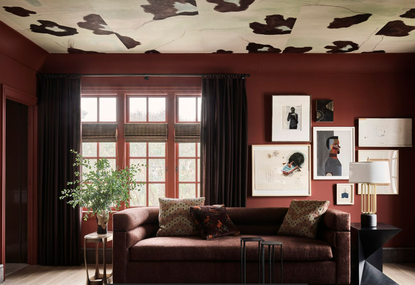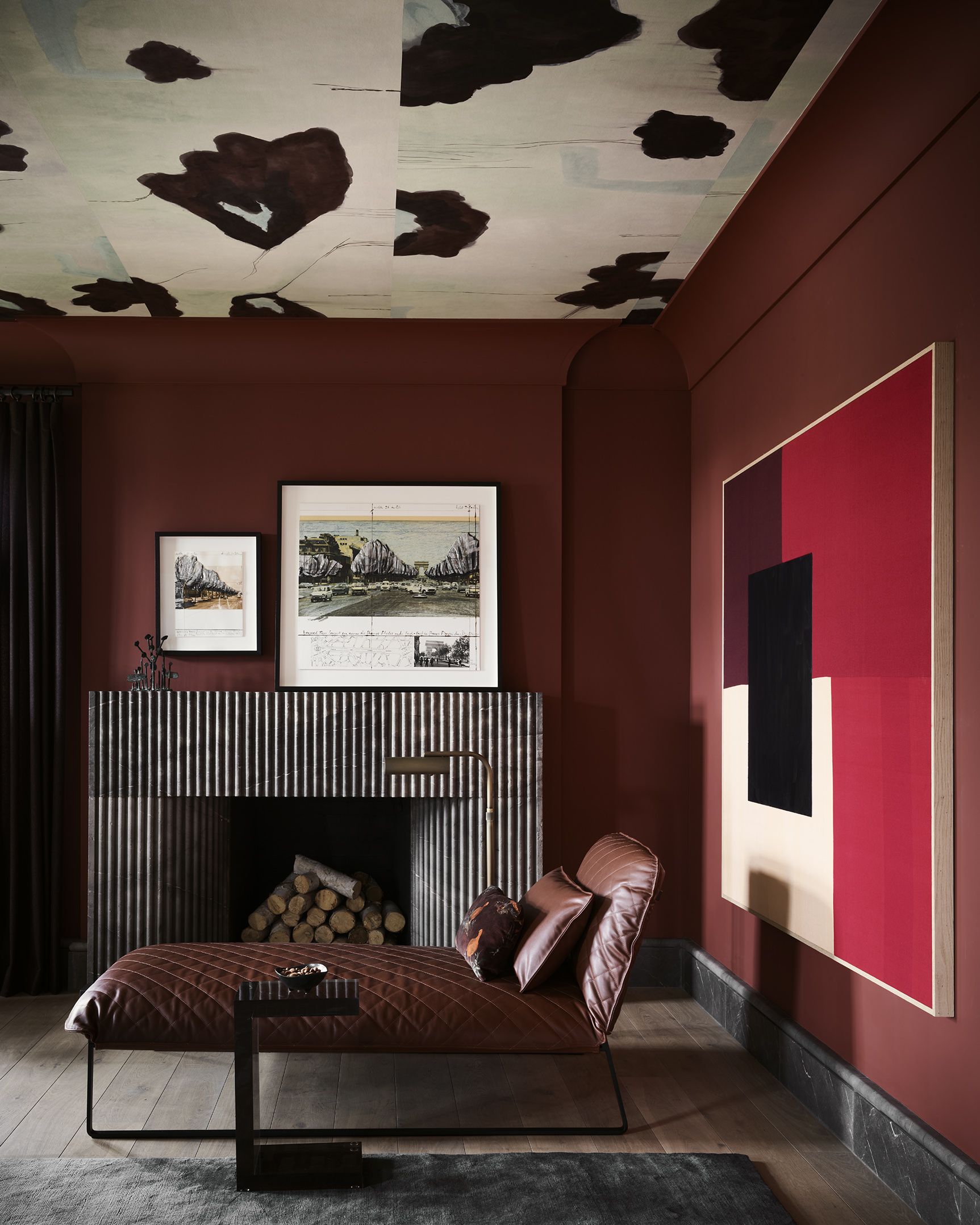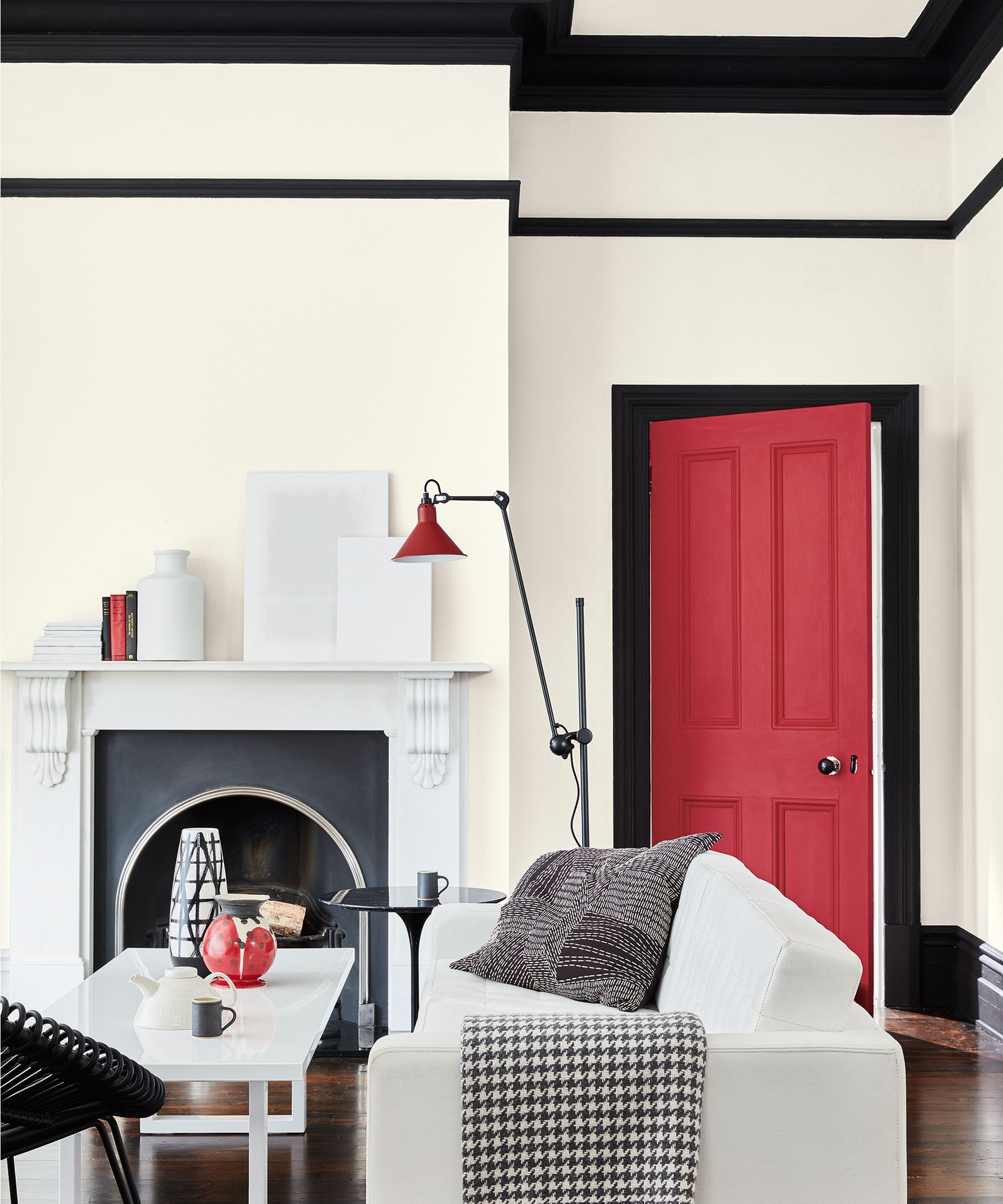Red living room ideas – 10 ways to harness the power of this bold color
Try these creative red living room ideas and make your home's interiors stand out from the crowd


Looking for red living room ideas? Red rooms can be bold, vivacious, classic, but they're hard to get right. The color is a deep, dominating one and imbued with a lot of emotion.
'Red is invigorating and passionate, lending a dramatic, intense quality to the room,' says Jennifer J. Morris, interior designer, JMorris Design. 'Sexuality, power, and wealth can be associated with red. A darker red can feel like a fall or winter space whereas a brighter, poppy tone can feel more like spring and summer.'
When it comes to living room color ideas, the spectrum is virtually endless, but red is a great way to make a big splash. Whether used liberally around spaces or as an accent hue, red can change your mood right away. Gone are the days of relegating red to out-of-sight, out-of-mind spaces, like tiny bathrooms or laundry rooms. Today it can stand as a focal point in a room and set the tone.
Here, we look at some of the different ways to use red, from softer, dusky tones to deep, rich burgundy.
10 red living room ideas that embrace this brave hue
1. Use tone-on-tone in red living rooms

In modern living rooms, one way to use red effectively is through tone-on-tone palettes. These simply feature one main hue and then other graded tones of the same color to create a complementary color scheme.
The key is choosing the right tone of red to act as the base. 'Red is the most powerful color in decorating so you have to choose your shade of red according to the atmosphere you want to create,' says Marianne Shillingford, creative director of Dulux. 'Full-on bright reds are not for the faint-hearted but deliciously opulent shades like Dulux Heritage Fitzrovia Red, Red Ochre and Florentine Red create rooms that have a Bridgerton effect and delight the senses rather than overwhelm them.'
'Red is the most advancing color and will make large open spaces appear more intimate because it’s also the warmest color in the spectrum. It offsets the coolness of north-facing light, so you might even get away with turning the heating down a notch or two and no one will complain,' says Marianne.
2. Use a bold hue as the backdrop for your living room

Walls in Radicchio and ceiling in Dove Tail, both Farrow & Ball
It's important to consider your lifestyle and the functionality of the space when choosing a color. If your living room is a space where you like to wind down and watch movies, you don't want your red to overwhelm, screaming for attention. You want it to be something that flows with the space.
By following the color trend for warmer tones of red and pairing them with other softer tones, you can underplay the effect. Red with a touch of brown or purple undertones will feel warmer than pure red with hints of pink. Also by choosing more earthy materials in your living room, like brick or wood, the boldness of red can be tempered.
'I love to use bold colors as a single source of color for a room. This way it feels neutral, yet bold,' says interior designer Chad Dorsey.
3. Create a laid-back vibe in the living room with rust tones

A wonderfully retro shade, the reddish-brown color symbolizes a slower way of life and a deep connection to nature. This particular shade can warm up even the coldest interiors and can be used as an accent hue or a neutral shade.
When it comes to colors that go with red, this shade pairs well with whites, creating a clean, edgy look. Other earthy colors such as browns, greens, and greys look great when paired with rust, creating a calm atmosphere. Plants especially look lovely against a rust wall – the perfect shade for urban jungle style.
'Red paint is confident and charismatic, or rich and sensuous,' says Helen Shaw, Benjamin Moore's UK Director. 'On the earthy end of the spectrum, muted rusty tones can evoke an easy-going, inviting vibe that blends beautifully with brown, taupe, and wood.'
'Deep cherry red tones can heighten the drama, sending a signal of color confidence. From the deepest garnet to a soft rose, red is very often used as a statement color,' Helen adds.
4. Give your living room gravitas with maroon

Maroon is a dark and saturated color; a combination of red and brown and sometimes plum. Since it's a deep, vivacious color, it doesn't easily pair with just any tone. There are, however, certain universal combinations that look good with it. Maroon pairs well with white, beige, and gold.
One reason to love a maroon living room is because of the color’s heat. In cold climate areas, it can create a sought-after atmosphere, perfect for creating a cozy scheme.
'I love to use bold colors as a single source of color for a room, it makes it feel neutral, yet, bold,' says interior designer Chad Dorsey.
Maroon, in particular, is a red color that goes with grey as well. Consider charcoal grey for color pairing however make sure the interior doesn't look too caved in. Classic maroon interiors benefit from natural wooden furniture. They are perfect both for intense maroon-colored walls and simple maroon decor.
'Red can be understated. It can swing warmer towards sun-baked brick and cooler towards crimson-kissed violets, providing a muted quality that brings depth and elegance,' says Helen. 'Incorporating a rich, bold paint color such as maroon is a fool-proof way to create an instant character in the living room.'
5. Use red as a accent in the living room

Colors in interior design affect how a room feels. Red walls, ceilings, furniture, or furnishings can create vitality and passion, for example, but by modulating the amount of red in a room, you can control its influence.
Consider adding a pop of red for an elegant living room as a way to dial back on the effects of this color. Accent pieces like cushions, paintings, and decor can be ideal candidates for bold hues. However, also consider using this color in more unexpected spaces, like on the floor or above a fireplace.
In this living room, the red armchairs look striking inside the black and white interior; especially against the dark floor. The velvet seaters shine and give the room more gravitas.
6. Try a red wallpaper

If you don't mind creating a daring interior, dedicate an entire wall to the shade. And if paints aren't your thing, then wallpaper is the best bet. The benefit of wallpapers is that they not only introduce color, they also bring in texture and pattern to your space.
One great living room wallpaper idea is to only cover the top or bottom half of a wall with it so that its color and pattern effect is slightly pared down and the interior gets a more balanced look. Consider covering the top half of the wall with paper with paneling on the bottom half. It's a classic look that will never go out of style.
In this room, the solid teal offers the perfect balance for the red wallpapered walls. The wallpaper with patterns also brings movement to this otherwise straightforward interior.
7. Add red through furniture

Red doesn’t have to account for wall paints, wallpapers, or the majority of the decor. The idea is that a deep red single surface can suck up the light in the room and feel rather dense. A patchwork of red, on the other hand, offsets the intensity of an all-red scheme. Case in point: a red sofa. You can use this cozy living room as a model for you're own – we're obsessed with the combination of rug, sofa and that antique mirror.
Remember that your accent furniture piece doesn't have to match other statement-makers in the room. Pulling from the same color family is all you need to make a room feel thoughtfully assembled without feeling too matchy-matchy.
8. Pair red with complementary colors in the living room

Red can be tricky to pin down; it's the strongest hue in the color wheel. But if paired up carefully, red can be a great companion to other shades. Powder blue or baby blue is a surprising color that looks good with red. It balances red in terms of strength and depth.
The two have a surprising harmony when paired together, and crimson is one of the colors that go with blue.
Similarly, sage and olive green and red make for a tranquil combo, with a careful balancing of both hues. The subtle tones of sage green when paired with bold red can conjure a brilliantly versatile living room.
Here, the walls drenched in the deep tone offer a wonderful canvas for the printed red chair to pop against. Since the room has large windows, natural light stops the room from looking too closed in, and the tan armchair adds a third grounding, complementary color to set the scene.
9. Try this ombre effect design

These dip-dye curtains and walls embody the sort of fun you can have with interior design. This is a trend that is perfect for those who want to rejuvenate their living room curtains.
To create the dye effect, choose materials like silk, wool, or synthetics that include rayon and nylon. Do not try to dye curtains made of 100 percent polyester as they do not absorb dyes appropriately. If you're planning on dying the colors at home, remember to prewash fabrics to allow for shrinkage, and to remove any residue left over from fabric production.
The dye effect also complements that two-tone wall, giving the interior a smart, one-of-a-kind look.
10. Paint living room doors red

Deep red was a shade loved by the Victorians, but over decades, it has been successfully reinvented and can look fantastically contemporary. Ditching the conventional go-to elements for the color red, this room proudly displays a pop of it on the door. The matte effect looks striking in this otherwise neutral living room.
When choosing the red for your room, be thoughtful about the shades you choose. A darker tone will feel more elegant and sophisticated, while a bright, fire truck red can add a playful element, but could make your room too shocking or intense.
Is red good for living rooms?
Yes! Red can make a living room look unique, striking and truly one-of-a-kind. The color pairs well with other complementary shades such as yellow, white, orange, green, blue, and black to make an interior pop. When decorating your space with red, remember to stay away from pastel tones such as peach, lime, and coral. Opt for stronger tones like a canary yellow, citrus orange, or dark green.
When it comes to picking the shades of red for painting walls, it's best not to go painting entire rooms in red unless you're sure you can live with the hue. But consider using the color in soft furnishings such as cushions or rugs, and mixing them up with other textiles. A good partner to red is black as it makes a moody, dramatic atmosphere. You could also choose duck-egg blue with a green base for a smart contract.

'Color is so personal. In Chinese culture, red symbolizes good fortune for the New Year. So, we gave this club room saturated in a deep crimson almost oxblood. This room elicits a magical feeling every time you are lounging in there,' says interior designer Adam Hunter.
How do I add red to my living room?
There are several ways to bring red into your living room. Touches of red can be incorporated through upholstery, furniture, or accent walls. You can also choose to have red on the floor – choose terracotta flooring and give your living room an earthy, gripping quality.
Consider painting your joinery in red instead of just walls. You can also add wallpaper in your room with red tones or patterns, and offset it with other neutral walls. Inside a largely muted interior, even a red carpet looks fantastic.
You can opt to color drench your interior with red using it across the room but in different tones. You can start with a maroon wall, and build your color story with tiny, lighter shades of red sprinkled through other elements. The key here is balance, so adding grey, white, or blue to the scheme will keep the interior from looking too closed in.
Apart from decor elements, a wonderful way to add just the tiniest hint of red is through fresh flowers. Add big bunches of roses and set them in transparent vases.
Be The First To Know
The Livingetc newsletter is your shortcut to the now and the next in home design. Subscribe today to receive a stunning free 200-page book of the best homes from around the world.
Aditi Sharma Maheshwari is an architecture and design journalist with over 10 years of experience. She's worked at some of the leading media houses in India such as Elle Decor, Houzz and Architectural Digest (Condé Nast). Till recently, she was a freelance writer for publications such as Architectural Digest US, House Beautiful, Stir World, Beautiful Homes India among others. In her spare time, she volunteers at animal shelters and other rescue organizations.
-
 What are the Most Comfortable Pillowcases? From Temperature Regulating to the Best for Your Skin
What are the Most Comfortable Pillowcases? From Temperature Regulating to the Best for Your SkinWhen you're looking for comfort in your pillowcases, material matters. These are the best you can buy
By Faaizah Shah Published
-
 5 Simple, but Genius Bathroom Layout Tricks That Will Make Your Space Work so Much Harder
5 Simple, but Genius Bathroom Layout Tricks That Will Make Your Space Work so Much HarderSmall switches to how you lay out your bathroom that help make the most of a small space
By Luke Arthur Wells Published

